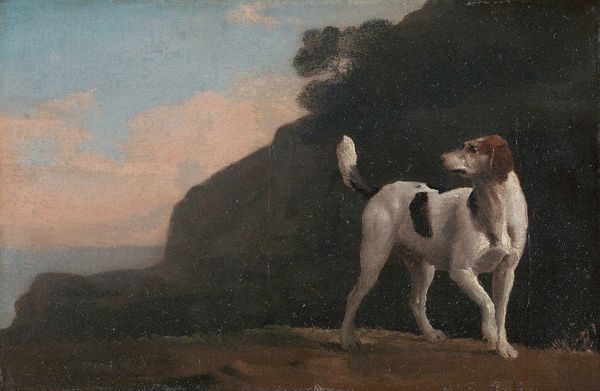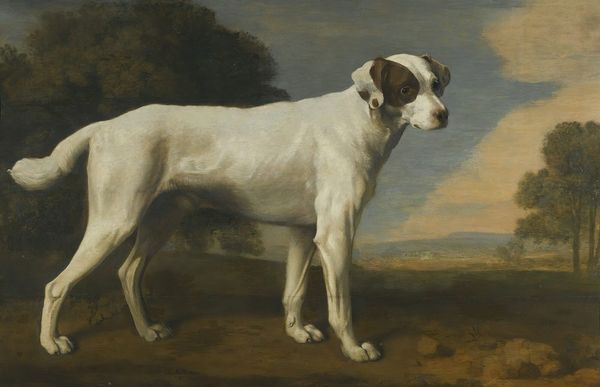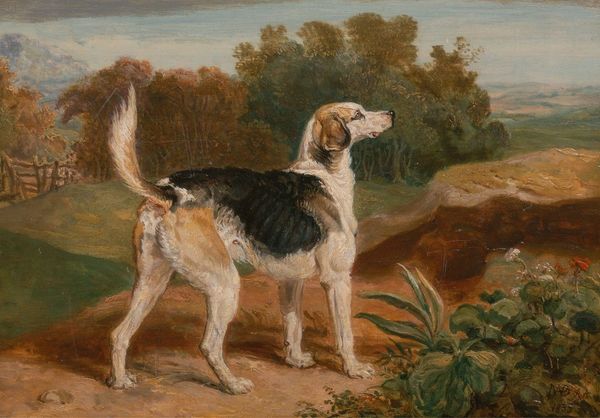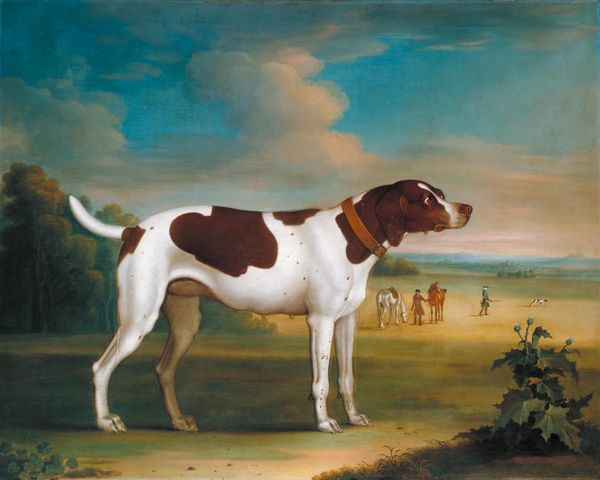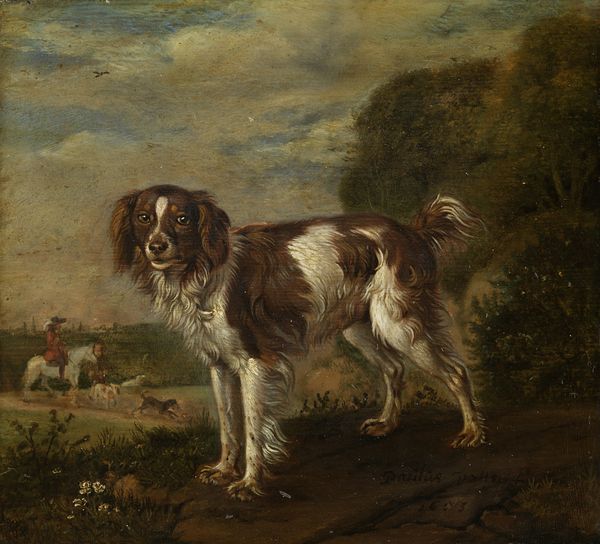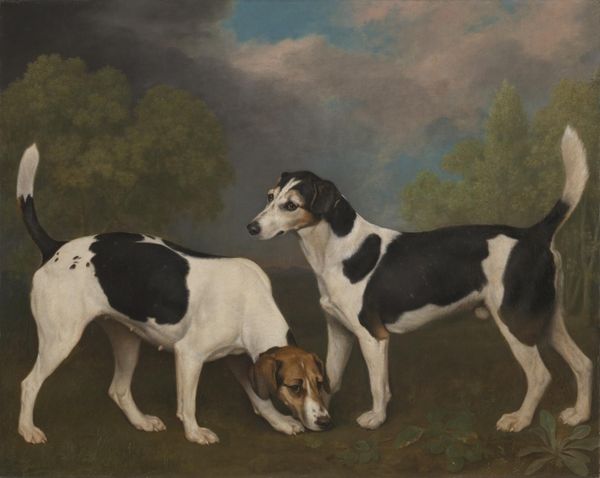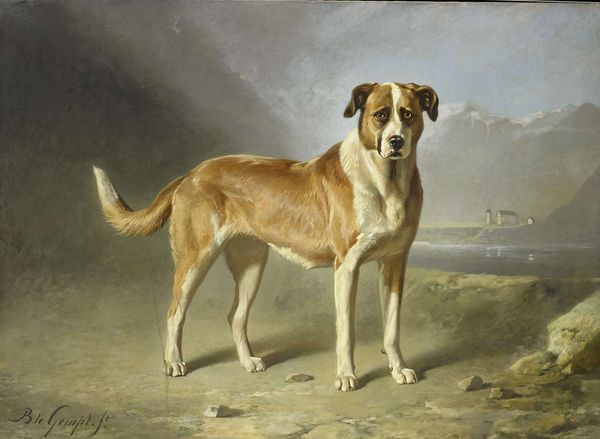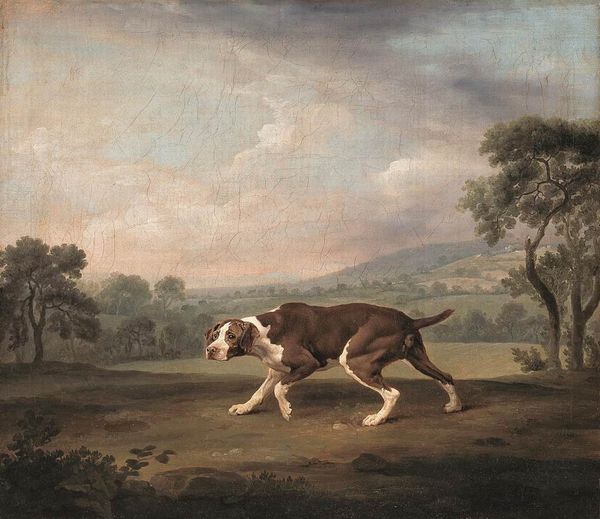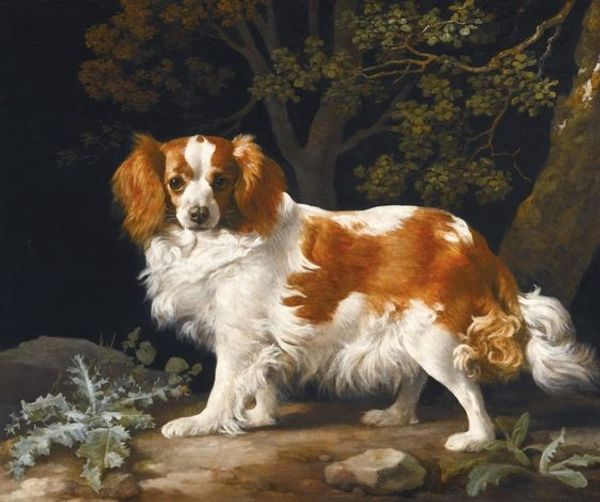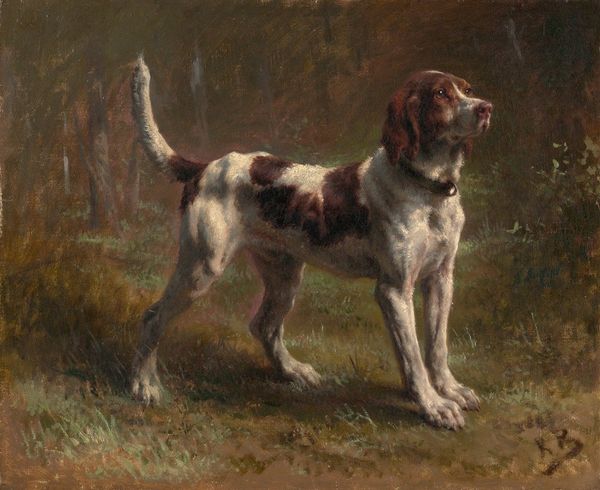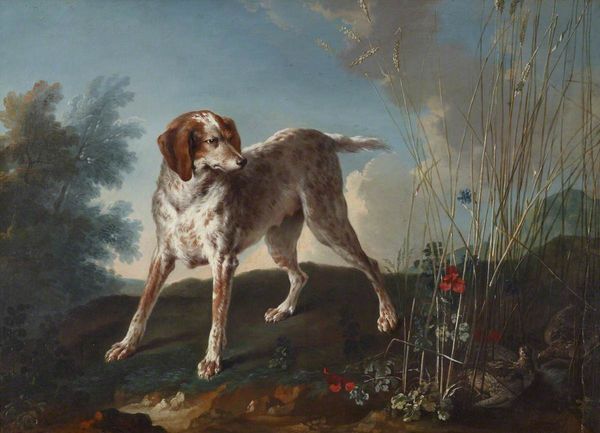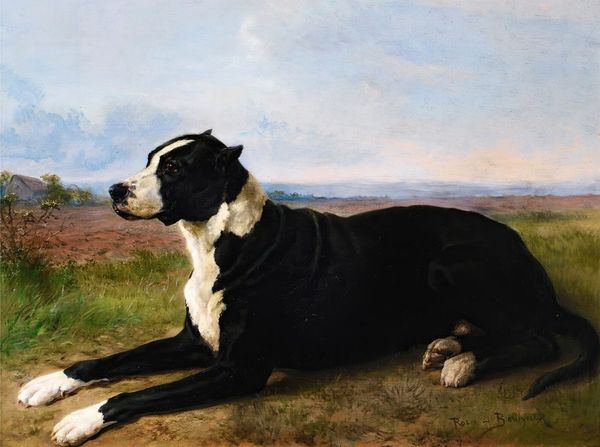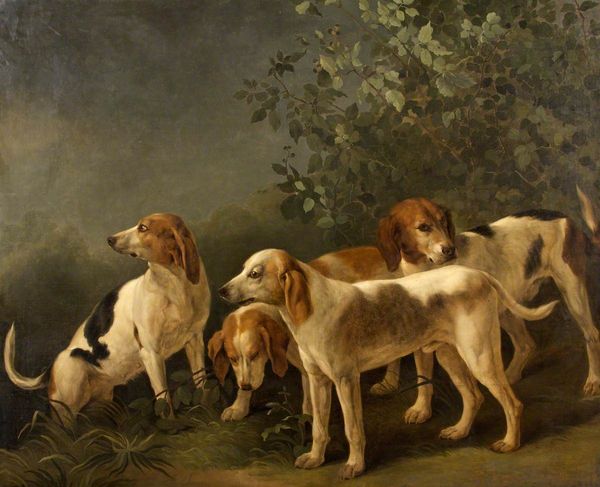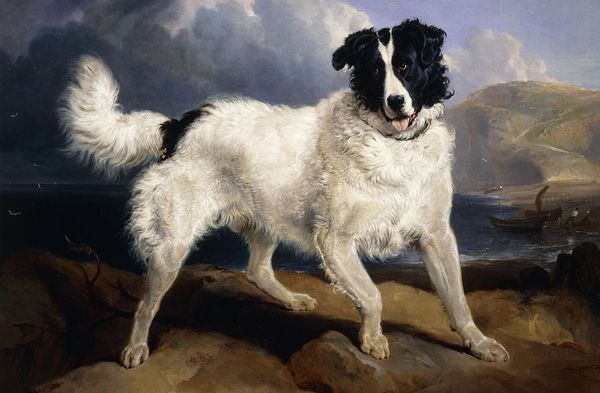
Copyright: Public Domain: Artvee
Editor: So here we have George Stubbs' oil painting, "Foxhound on the Scent," from around 1760. What strikes me most is how dignified the dog looks, almost like a canine portrait set against a surprisingly melancholic landscape. What’s your take on it? Curator: I see a powerful commentary on the changing role of animals within 18th-century British society and the emerging cultural value of the "noble" countryside. Hunting was undergoing a transformation, becoming less about sustenance and more about sport for the landed gentry. Doesn't the dog itself almost seem to be an aristocratic figure, carefully bred and positioned within this landscape? Editor: That's a really interesting point! I hadn't considered the societal shift reflected in the dog's elevated portrayal. Is Stubbs making a statement, do you think, or simply documenting the prevailing attitude? Curator: Stubbs, an astute observer, was deeply embedded in that world. While he certainly possessed a keen eye for naturalistic detail – look at the anatomical precision! – he's also participating in constructing a visual language that legitimizes the power structures of the time. Consider the art market: Who commissioned and purchased such works? How did these images circulate and reinforce certain social hierarchies? Editor: So, the painting is not just a picture of a dog, but also a reflection of who could afford to have their world represented in art and the cultural values they were promoting? Curator: Exactly! The dog’s portrait, along with its romantic backdrop, reinforces the idea of a natural order and celebrates a specific kind of elite life connected to the land. How the institution of art – and artists like Stubbs – played a part. Editor: Wow, I will never look at another animal portrait the same way. It's fascinating to consider the artwork as not just beautiful, but as an active participant in its society! Curator: Indeed. Seeing art as intertwined with its socio-political fabric unlocks richer and more critical ways of engaging with it.
Comments
No comments
Be the first to comment and join the conversation on the ultimate creative platform.
